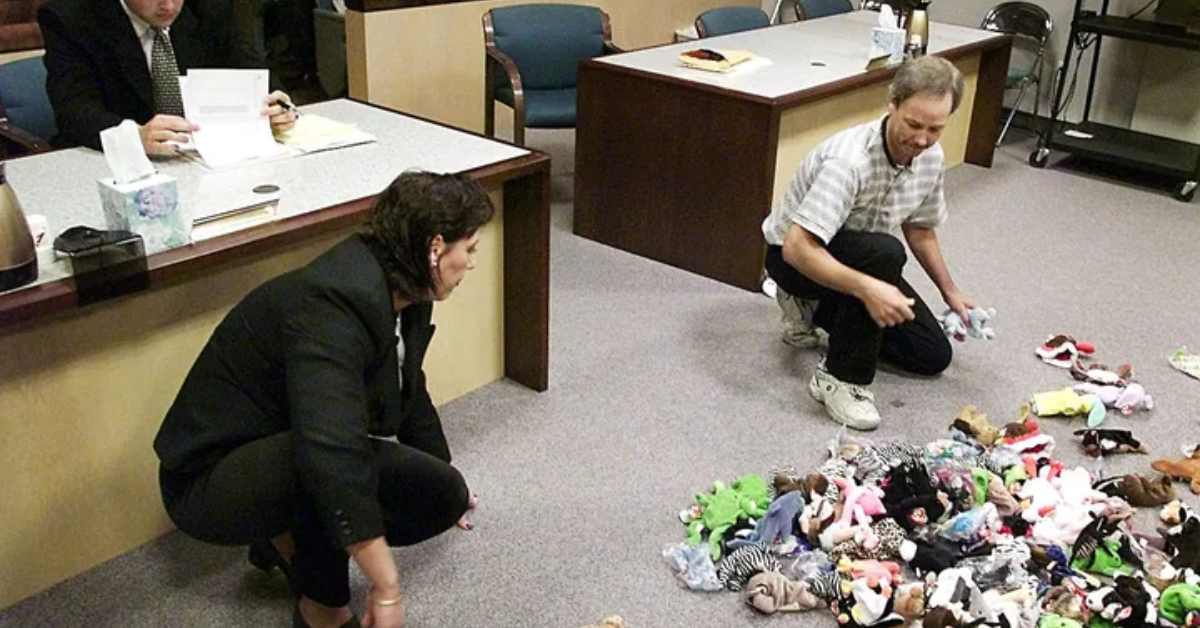In 1999, the world was captivated by the Beanie Baby craze, with collectors dreaming of striking it rich with their prized plush toys.
However, for one divorced couple, their Beanie Baby collection became the center of a contentious dispute that played out in a Las Vegas courtroom.
Beanie Baby Divorce
In a surreal scene captured by Reuters on November 5, 1999, attorney Frank Totti oversaw the sorting of Beanie Babies as his client Frances Mountain and her ex-husband Harold Mountain attempted to divide their collection.

The couple, who had divorced just four months earlier, were ordered by Family Court Judge Gerald Hardcastle to split the collection, which was valued between $2,500 to $5,000.
A Collection Divided
Despite their best efforts, Frances and Harold couldn’t agree on how to divide their Beanie Babies collection. As a result, Judge Hardcastle intervened, ordering the toys to be spread out on the courtroom floor and divided one by one under his supervision.
The first Beanie Baby to go was Maple the Bear, marking the beginning of the end for their once-beloved collection.
The Aftermath: Reflecting on a Frenzy
The photo of Frances and Harold Mountain sorting their Beanie Babies serves as a stark reminder of the frenzy that surrounded these small stuffed animals in the late 1990s. What started as a harmless hobby for many collectors quickly escalated into a speculative bubble fueled by hopes of massive profits.
Conclusion
The Beanie Baby craze may have faded into history, but the lessons learned from incidents like the Mountain’s divorce saga still resonate today. It serves as a cautionary tale about the dangers of placing too much value on material possessions and the importance of communication and compromise in relationships.
FAQs
Q. What sparked the Beanie Baby craze?
A. The Beanie Baby craze was ignited by a combination of clever marketing, limited production runs, and the allure of potential profits from rare or retired designs.
Q. Are Beanie Babies still valuable today?
A. While some rare or limited edition Beanie Babies may fetch high prices among collectors, the majority of them have depreciated significantly in value since the peak of the craze.
Q. What caused the decline of the Beanie Baby market?
A. Overproduction, changing consumer tastes, and the bursting of the speculative bubble contributed to the decline of the Beanie Baby market in the early 2000s.
Q. Are Beanie Babies worth collecting now?
A. For many collectors, Beanie Babies hold sentimental value rather than monetary worth. While some may still enjoy collecting them for nostalgia’s sake, they are unlikely to provide substantial financial returns.
More Articles:



